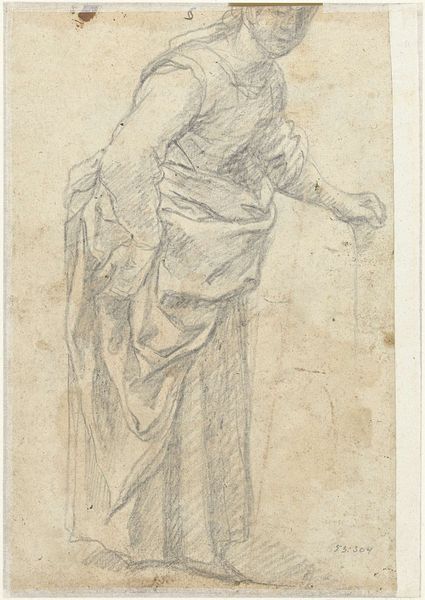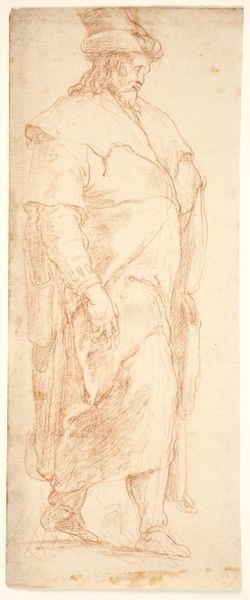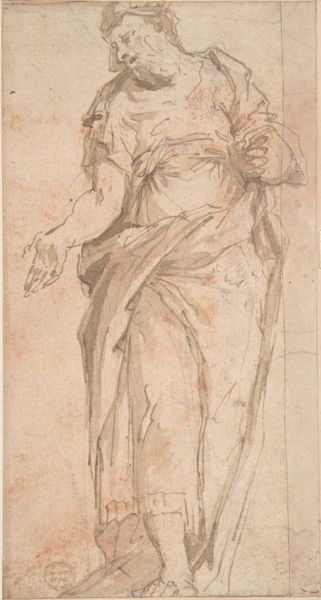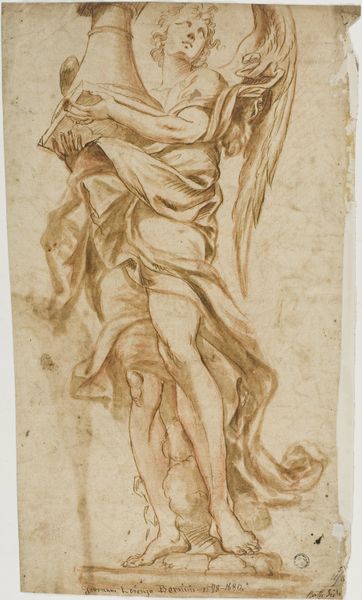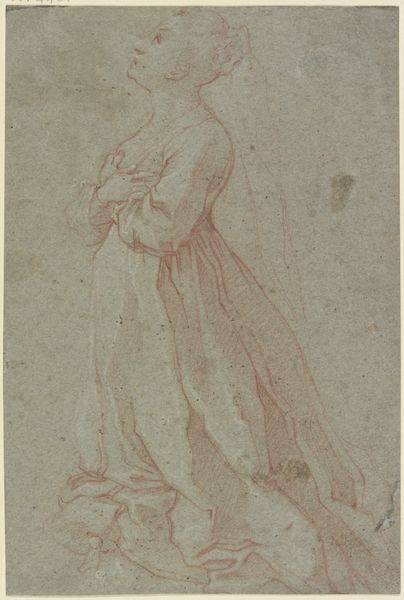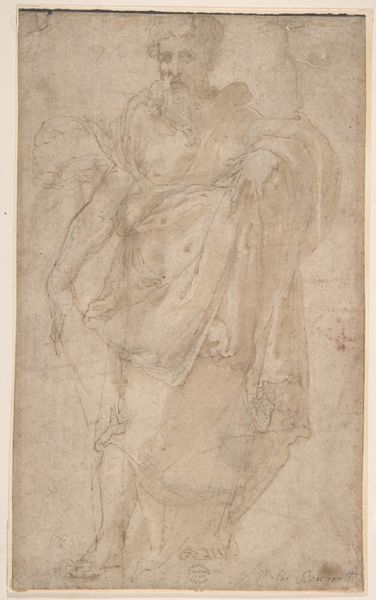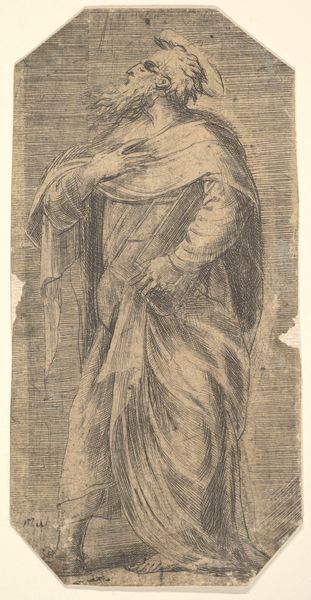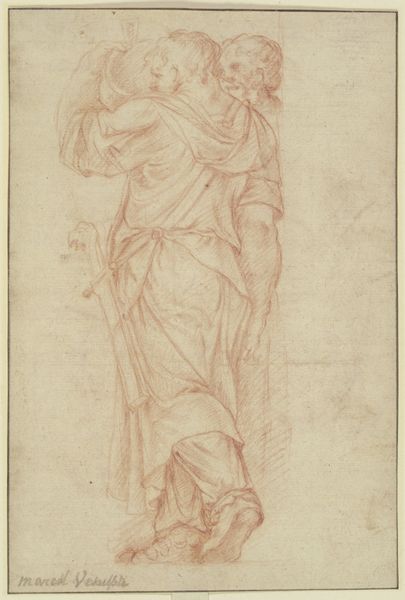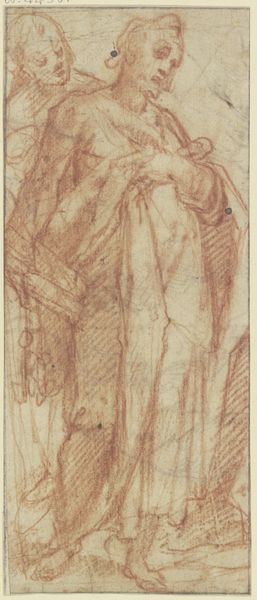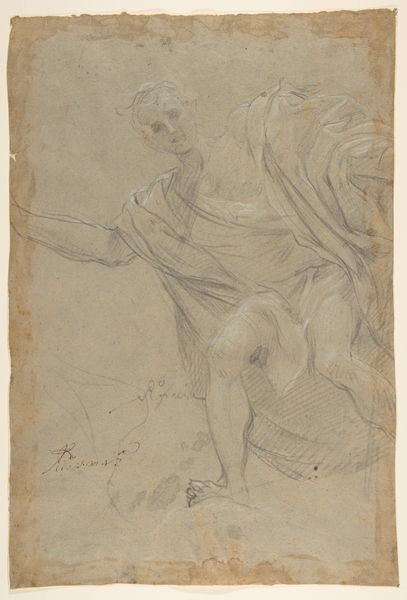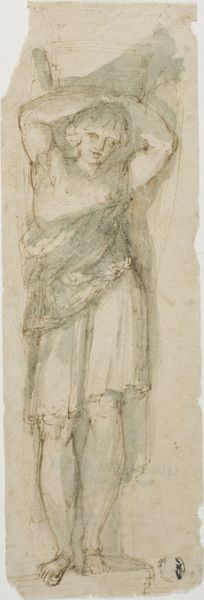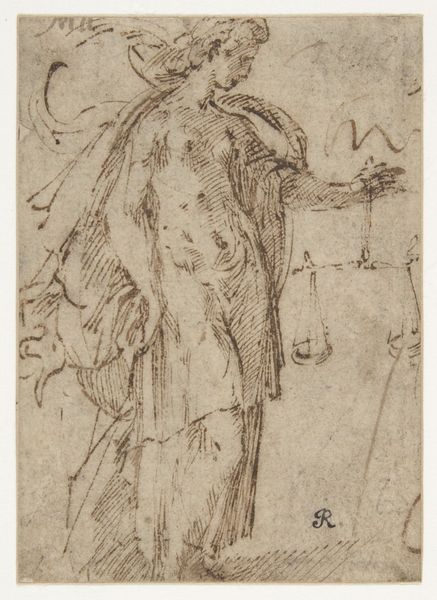
drawing, print, paper, ink, pen
#
portrait
#
drawing
# print
#
figuration
#
paper
#
11_renaissance
#
ink
#
pen
#
italian-renaissance
Dimensions: 253 × 110 mm
Copyright: Public Domain
Editor: So, this is "Study of Levi," a pen and ink drawing on paper done by Alonso Berruguete sometime between 1526 and 1532. I'm struck by how dynamic it is, even though it's just a sketch. The lines really give a sense of movement to the figure. What can you tell me about it? Curator: What I see is a study in controlled drama. Berruguete, working during the Italian Renaissance, was deeply influenced by the political and religious upheavals of the time. This piece reflects the heightened emotionality and spiritual intensity that permeated artistic circles. Consider the historical context: the Sack of Rome occurred just a few years before this work, a cataclysmic event that shook the foundations of the Italian Renaissance. Does that historical backdrop resonate with how you see this artwork? Editor: Definitely. There's a tension there, like he's caught in a moment of contemplation before action, maybe? Curator: Exactly. Artists then were grappling with shifting power structures within the Church and secular society, a kind of crisis of faith if you will. Figures like Levi, from the Bible, were re-examined, their stories made newly relevant. Notice how Berruguete renders Levi's gaze—downcast, internal. How might the figure's pose contribute to a narrative or interpretation during this turbulent time? Editor: I see it as introspection, perhaps even shame or doubt, feelings that would probably resonate in the changing landscape of religious thinking. Curator: Precisely! The Italian Renaissance was far from a monolithic movement, particularly if considering how art and the role of artists change under varied patrons such as The Church, royalty, or merchantile class. Editor: That’s fascinating! It really brings a new layer of understanding to what initially seemed like a simple drawing. Curator: It's a testament to how even seemingly small works on paper can speak volumes about the larger social and political forces at play. This makes you wonder how other representations of Levi may differ depending on who commissions a work and for what context. Editor: It definitely gives me a lot to consider about art's place in society at the time! Thanks!
Comments
No comments
Be the first to comment and join the conversation on the ultimate creative platform.
